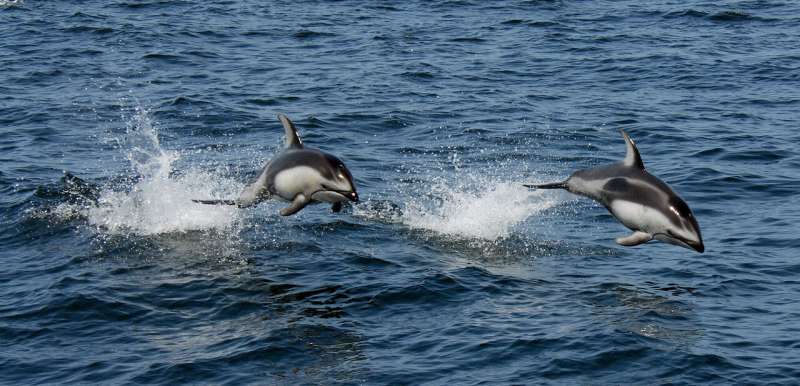Increasing stability decreases ocean productivity, reduces carbon burial

As the globe warms, the atmosphere is becoming more unstable, but the oceans are becoming more stable, according to an international team of climate scientists, who say that the increase in stability is greater than predicted and a stable ocean will absorb less carbon and be less productive.
Stable conditions in the atmosphere favor fair weather. However, when the ocean is stable, the layers of the ocean do not mix. Cooler, oxygenated water from beneath does not rise up and deliver oxygen and nutrients to waters near the surface, and warm surface water does not absorb carbon dioxide and bury it at depth.
"The same process, global warming, is both making the atmosphere less stable and the oceans more stable," said Michael Mann, distinguished professor of atmospheric sciences and director of the Earth System Science Center at Penn State. "Water near the ocean's surface is warming faster than the water below. That makes the oceans become more stable."
Just as hot air rises, as is seen in the formation of towering clouds, hot water rises as well because it is less dense than cold water. If the hottest water is on top, vertical mixing in the oceans slows. Also, melting ice from various glaciers introduces fresh water into the upper layers of the oceans. Fresh water is less dense than salt water and so it tends to remain on the surface as well. Both elevated temperature and salinity cause greater ocean stratification and less ocean mixing.
"The ability of the oceans to bury heat from the atmosphere and mitigate global warming is made more difficult when the ocean becomes more stratified and there is less mixing," said Mann. "Less downward mixing of warming waters means the ocean surface warms even faster, leading, for example, to more powerful hurricanes. Global climate models underestimate these trends."
Mann and his team are not the first to investigate the impact of a warming climate on ocean stratification, but they are looking at the problem in a different way. The team has gone deeper into the ocean than previous research and they have a more sophisticated method of dealing with gaps in the data. They report their results today (Sept. 29) in Nature Climate Change.
"Other researchers filled in gaps in the data with long-term averages," said Mann. "That tends to suppress any trends that are present. We used an ocean model to fill in the gaps, allowing the physics of the model to determine the most likely values of the missing data points."
According to Mann, this is a more dynamic approach.
"Using the more sophisticated physics-based method, we find that ocean stability is increasing faster than we thought before and faster than models predict, with worrying potential consequences," he said.
More information: Increasing ocean stratification over the past half-century, Nature Climate Change (2020). DOI: 10.1038/s41558-020-00918-2 , www.nature.com/articles/s41558-020-00918-2
Journal information: Nature Climate Change
Provided by Pennsylvania State University





















